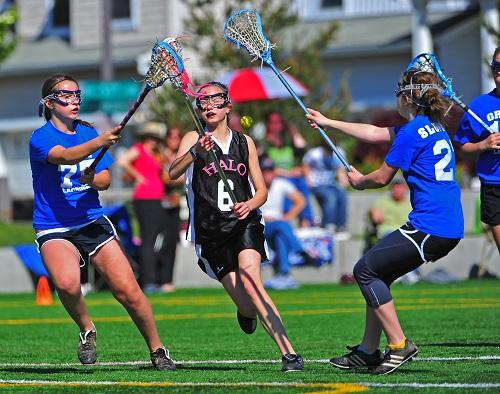

Additionally, about 60 percent of 6- to 12-year-olds and 13- to 17-year-olds participated in team sports in 2019 (a five-year high), and the number of young adults participating in team sports also increased.
Unfortunately, participation in 16 of 23 team sports tracked by the SFIA dropped. Niche sports such as ultimate disc, paintball, beach/sand volleyball and ice hockey suffered significant declines.
Details about the up-and-down year can be found in the SFIA’s “2020 U.S. Trends in Team Sports Report,” which tracks data in youth participation, ethnic breakdowns and gender disparities.
“The growth in team sports participation in 2019 is encouraging, but with the pandemic, it feels as though we are taking two steps forward and one step back,” Tom Cove, SFIA president and chief executive officer, said in a statement. “Our industry, youth leagues [and] sports organizations must unite forces to welcome children back to the game once it is safe to do so. Team sports have suffered greatly in 2020, and America will be eager to return to play.”
Coronavirus shut down youth, high school, college and professional sports in mid-March 2020, Some local programs might not survive the pandemic, but recent news about ice hockey, roller derbyand new sports complex developmentsis encouraging.
That said, the news from SFIA’s latest report on team sports might give event organizers pause. In 2019, the number of sports per participant decreased to its lowest number ever at 1.84 sports per participant. Cove notes in the executive summary of the 71-page report that he’d prefer that number be two.
“This metric speaks directly to the issues of specialization in team sports,” he wrote. “We, along with many other youth sports advocates, believe that early specialization into a single sport may not be the best direction for many young athletes.”
SFIA officials hope young athletes will experiment with new sports and learn new skills when youth sports return in the post-pandemic era.
Other highlights of SFIA’s “2020 U.S. Trends in Team Sports Report”:
- Male participation rates continue to be higher than female rates, although there was double-digit growth among 6- to 12-year-old girls in flag football, touch football, lacrosse, rugby and beach/sand volleyball. Among 13- to 17-year-olds, double-digit growth took place in baseball, tackle football, touch football, ice hockey, roller hockey, slow-pitch softball and wrestling.
- Rates of sports participation decline as family household income decreases, and that disparity has grown since 2014.
- Nearly 85 percent of team sports coaches have received some form of training in the past five years — the highest percentage ever. Cove attributes much of the increase in coaches’ training to the works of The Aspen Institute’s Project Play.
Indeed, that initiative was launched in 2017 as Project Play 2020 and was recently renamed Project Play 2024. Themulti-year effort mobilizes industry leaders to develop shared goals and increase participation by making sports accessible to all children regardless of race, gender, zip code or ability. Its primary focus is on improving participation rates for kids under 12 — particularly low-income youths and girls — while consolidating efforts to bolster quality and affordable community-based sport options.
“Collective impact works,” TomFarrey, executive director of The Aspen Institute’s Sports & Society Program, Project Play’s backbone organization, said last fall in a statement. “Organizations from across sectors came together through Project Play 2020 and, guided by a theory of change, attacked a complex challenge from a variety of angles, delivering real results. Now, we take next steps with Project Play 2024, with members who can turn today’s crisis into tomorrow’s opportunity and help build a new state of play for youth in the U.S.”
Also encouraging is data from the National Federation of State High School Associations, which for the first time in 50 years did not release its annual sports participation survey in 2020. Instead, the organization shared insightsabout fall sports that took place in 2019, which (unlike winter and spring sports) were not halted by the pandemic. Specifically, participation numbers increased in girls’ volleyball, and 11-player football — which has been declining in participation for the past three years — experienced its smallest drop to date.
A total of 18,000 online interviews were completed for the SFIA’s 2019 participation survey by a nationwide sample of individuals. The “2020 Trends in Team Sports Report” is freeto SFIA members and available for purchaseby non-members.

